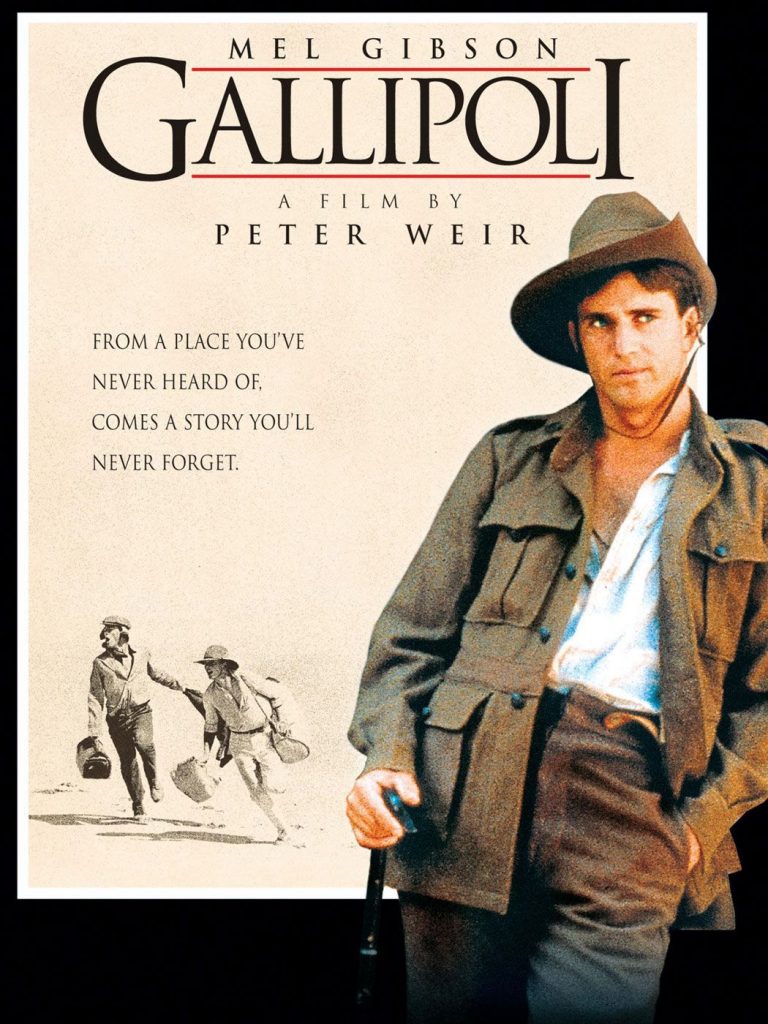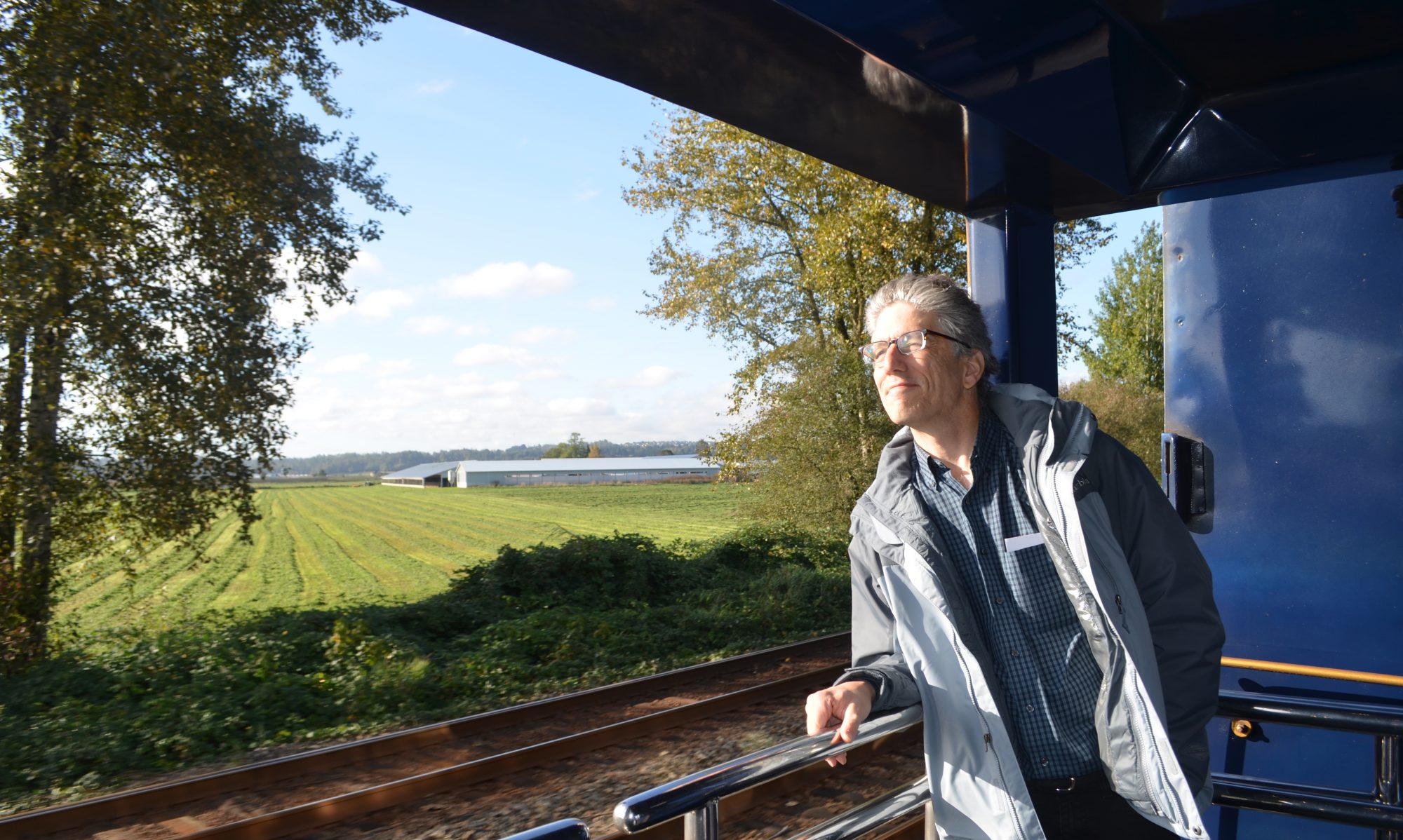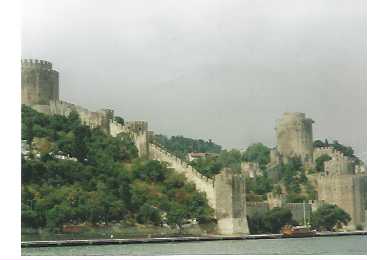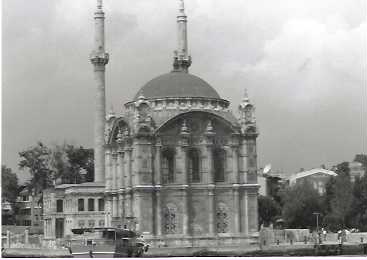Beaten in the Name of Comfort: Dave Does a Turkish Bath
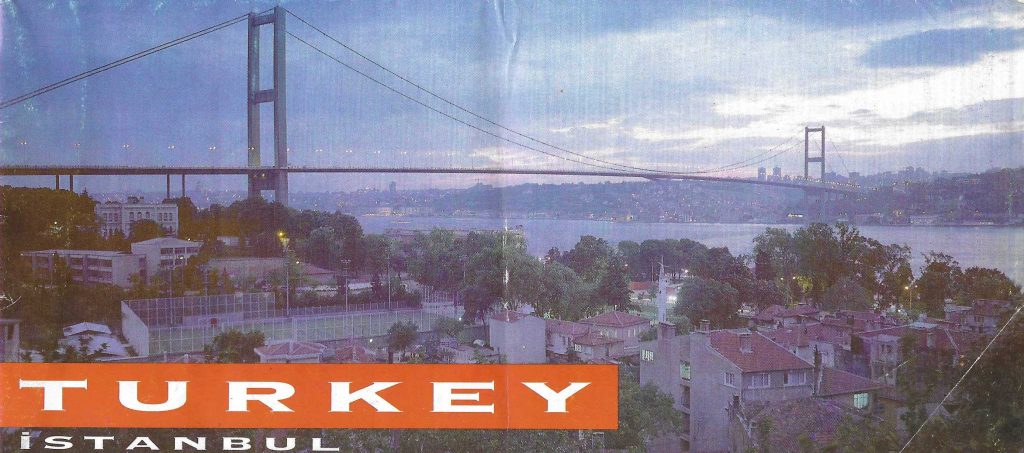
“Joey, have you ever been inside a Turkish prison?”
–Peter Graves in “Airplane.”
I had no idea how tired I was until I dragged my weary body to the Istanbul YHA Youth Hostel and beached myself. At first I thought it was fatigue from a long overnight train ride, being woken up at O’dark hundred hours at the Turkish border to pay for a visa my guidebook said was free and an early-morning arrival in an extremely hot city; but I quickly realized there was more to it. After so many months of trying to see everything, I barely had enough energy to do anything. This might have been understandable if I was far from the city’s landmarks, but I wasn’t. Hell, the Ayasofya Camii (Cathedral of St. Sophia) was across the street from the hostel and I never made it there, partly because the entrance was on the other side of the church a block away and I couldn’t be bothered to walk the distance.
I’d never heard of the Ayasofya before, but that didn’t bother me. I hadn’t heard of the Indonesian temples of Parambanan or Burobudur until I traveled to Java, but that didn’t keep me from wanting to see them. In fact, it only increased my interest.
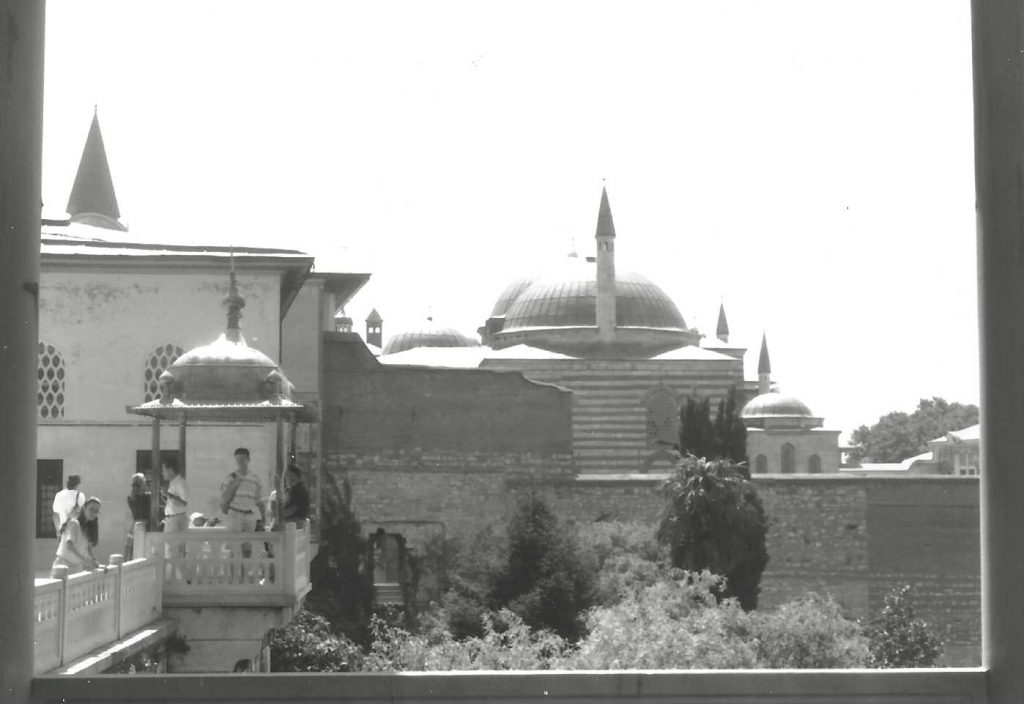
Built in 537, the Ayasofya was dedicated to St. Sophia by the Emperor Justinian. The church was the center of Byzantine Constantinople and a major target of the Crusaders when they overran the city in the early 13th century. It also served as a Roman Catholic church until 1453 when the Turks retook the city and converted it into a mosque. At least that’s what “Passport’s Illustrated Travel Guide to Turkey” says about the cathedral, which became a museum in 1934. While I can’t vouch for the interior, I can say the brick exterior is quite impressive with four minarets (two beside the front, two even with the back), rising from the ground like slender rockets just waiting for the Turkish version of NASA to begin its countdown to lift off, if only the bricks weighed a little less. (I can imagine an astronaut in orbit saying, “Ankara, we have a problem.”) The whole dome-filled complex is mind-boggling, especially when seen from the perspective of a small, three-story hostel across the street. The proportions are so out of whack it almost seems as if someone had built a shack across the street from the Empire State Building. The proportions aren’t as skewed because most of the buildings nearby are the same size as the hostel.
I didn’t miss every landmark. My first day in the city I dragged myself to the Blue Mosque, the Ottoman Empire’s equivalent of a royal church. Sultans who lived at Topkapi Palace down the street attended religious services with much pomp accompanying their convoys going the block-long route between the two buildings. I also roamed Sultanahmet, the district surrounding the hostel before heat and exhaustion got the better of me. I made it to Topkapi Palace the next day, where I took a tour of the few harem rooms that were open to the public. I also visited what I like to call The Imperial Collections of Things including weapons, jewelry, clocks and stuff. The tour left me with the impression that these emperors had way too much stuff and could have benefited from having their moms come in and throw out a few things: A baseball card collection here, a few of the smaller loose diamonds over there, and some of those old guns. I even saw the eunuch’s quarters near the harem rooms and wondered who would volunteer for a job like that. I’ve heard of companies that will only hire non-smokers, but having castration as a requirement seems a pretty dear price to pay for employment.
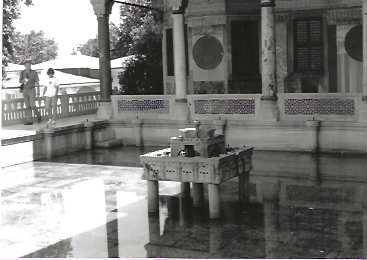
I also spent half a day on a four-hour cruise along the Bosporous River, which separates the Asian side of the city from the European side. The $2 cruise would have been a great bargain if I’d stayed awake. Unfortunately, even the ancient palaces, buildings and fortifications weren’t enough to combat hunger, the heat and fatigue. I did have nice naps in beautiful seaside settings, though.
The highlight of my stay, however, was my visit to a Turkish bath. Since I’d missed Hungary’s famous baths in Budapest, I knew I couldn’t skip the Turkish variety. To say it was a culture shock is to engage in understatement. From the moment I entered I was in way over my head.
The highlight of my stay, however, was my visit to a Turkish bath. Since I’d missed Hungary’s famous baths in Budapest, I knew I couldn’t skip the Turkish variety. To say it was a culture shock is to engage in understatement. From the moment I entered I was in way over my head.
In the time since the bath, I’ve tried to find a way to explain it that makes sense and the only way I’ve been able to do it is to use my recipe-style journal entry from that day in late August:
1. Enter Turkish bath reception area, look confused.
2. Pay 800,000 Turkish Lire for full package: bath, massage, rub-down, vertical hold adjustment and general abuse in foreign language, then accept chit for a massage. Get pointed into the building. Wander around lost: 1 minute. Get sent upstairs by bystanders who have obviously gathered there just so they can laugh at lost foreigners.
3. Go up to the second floor, as directed. Wander around lost: 40 seconds. Get sent up to third floor.
4. Go to third floor. Stand lost: 30 seconds. Get guidance from man from second floor who shows me to my changing room, then takes my changing towels with him.
5. Sit in room waiting, trying to figure out what to do: 5 minutes.
6. Go back to second floor. Have guy ask why I’m not undressed (in Turkish). Ask for towel.
7. Change into towel, lock room, go downstairs.
8. Go back to room when man points out I’m not wearing slippers.
9. Go to hot, damp room with men laying in middle of circular platform in center of the room. Look for place to lay down that’s far enough away from other guy so he won’t think I’m trying to get fresh.
10. Bake at 450 degrees for 30 minutes, then turn.
11. Have masseuse move me to 6 o’clock in the circle. Begin massage, be asked if I want “special massage.”
12. Pray “special massage” doesn’t mean he wants to get fresh.
13. Ask how much special massage costs and what it involves. Explain I don’t have much money. He says a special massage is “very soft.” As far as cost is concerned, he says only, “No problem.”
14. Special massage begins, I think.
15. Am again asked if I want “special massage.” Whole negotiation process begins all over again.
16. Massaging begins as masseuse lowers something resembling a pillowcase onto my back and pulls down slipknot, forcing out soapsuds, then alternately washes and beats the hell out of me.
17. Lather, rinse, repeat.
18. Rinse with two buckets full of frigid water poured over head.
19. Yell, “Help me, I’m melting.”
20. Undergo final beating and rubbing with scouring pad/loofahs, which remove approximately 70 jillion unwanted skin cells (and layers of skin) covering my back.
21. Am asked if I want special massage.
I left the Turkish bath feeling tired, but refreshed in much the same way that Frank Bruno may have felt refreshed after his fight with Mike Tyson.
Having seen all of Istanbul I could take, I started the final push to Israel. I hadn’t completely given up on travel. Hoping to avoid the expense of flying directly there, I planned to take an overland route through Syria and Lebanon until I learned border authorities turn back people with Israeli visas in their passports. Mine was hard to hide. When I went to Israel on my only other trip out of The States nine years before, the Customs official stamped the front page of the passport. The only other option left was a ferry to Haifa. Unfortunately, the only things anyone in Istanbul knew about the ferry was that it docked in the Aegean Sea town of Marmaris in Southwest Turkey, a 15-hour bus ride away. Knowing I couldn’t withstand another overnight juggernaut in a cramped van, I sought a way to break up the trip and found a two-day tour of Canakkale in the Dardanelles, ending in Selcuk, just four hours away from Marmaris. I wasn’t going there for a nature tour, though. I went to see Galipoli, the site of a World War I battle where the Turks slaughtered the Brits, the Kiwis, the Aussies and a young Mel Gibson.
